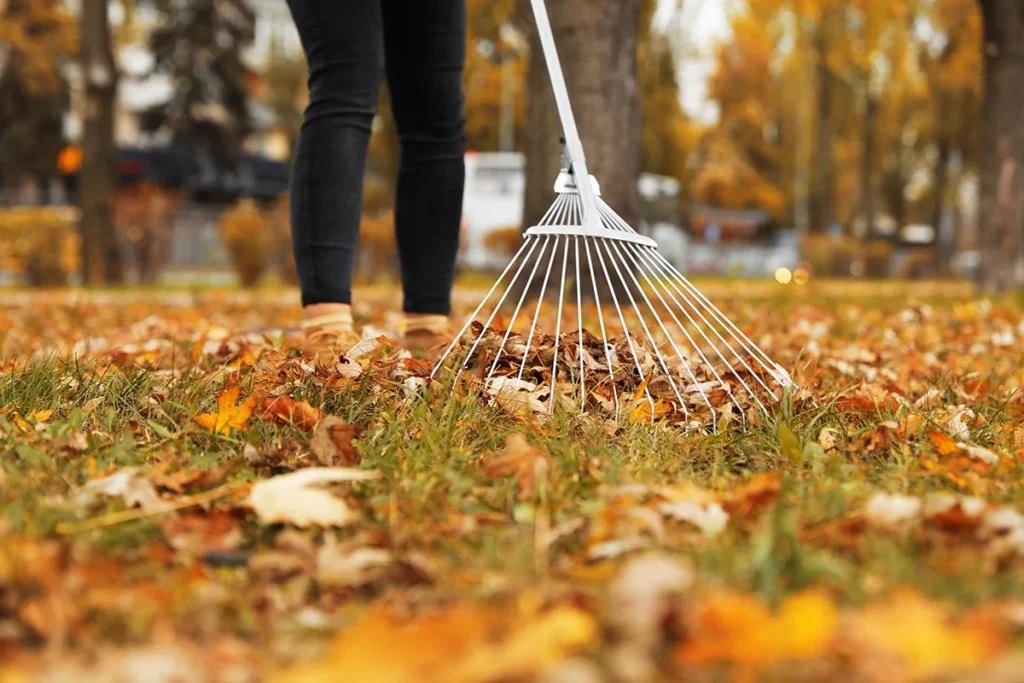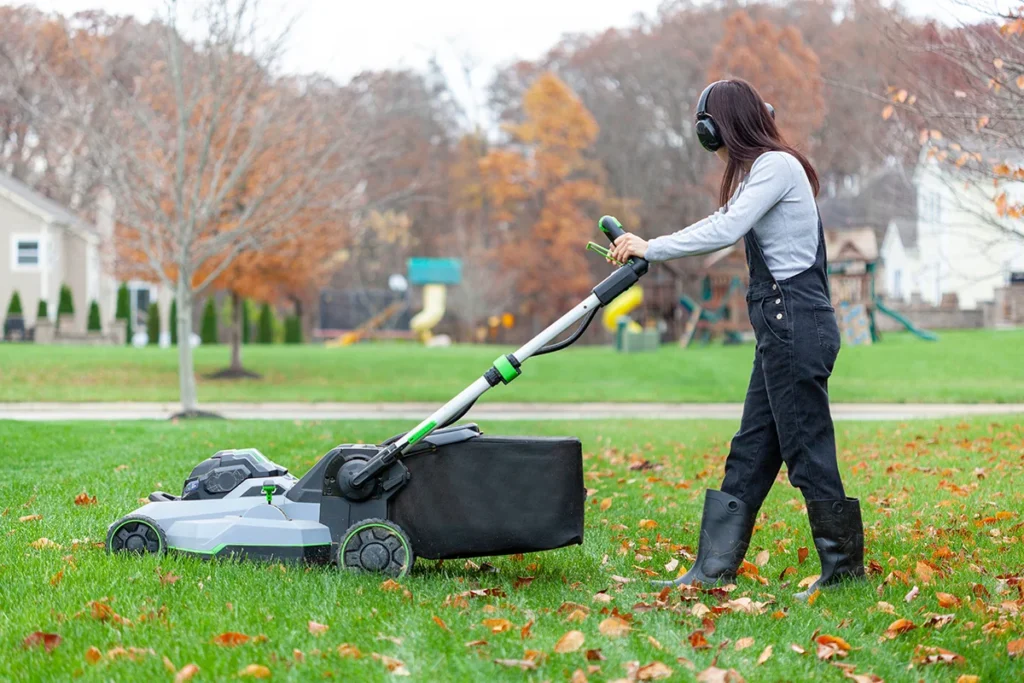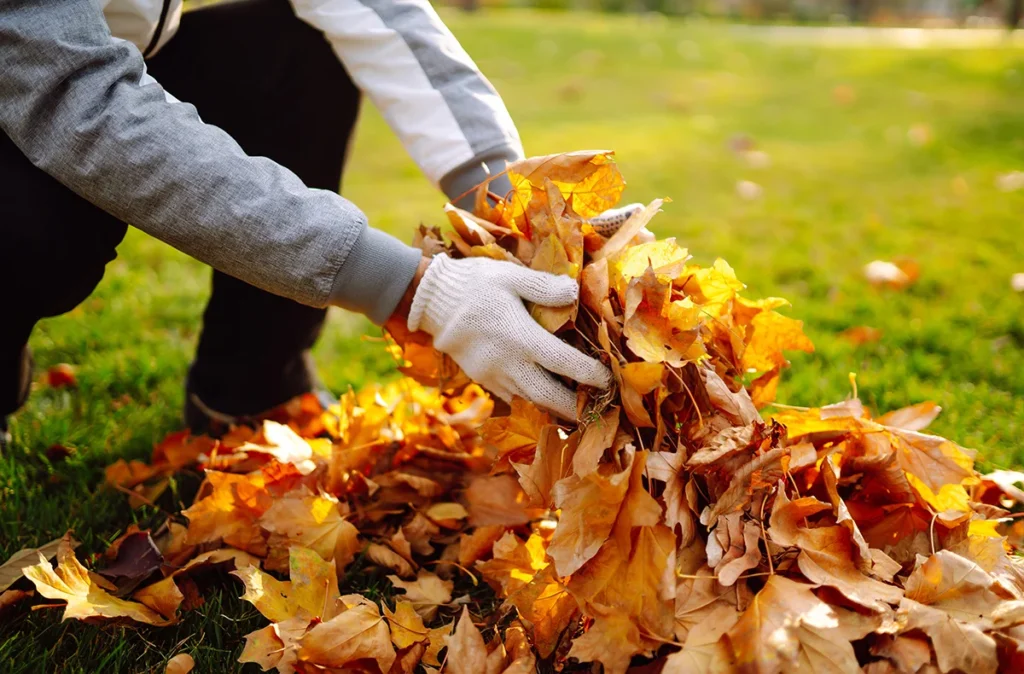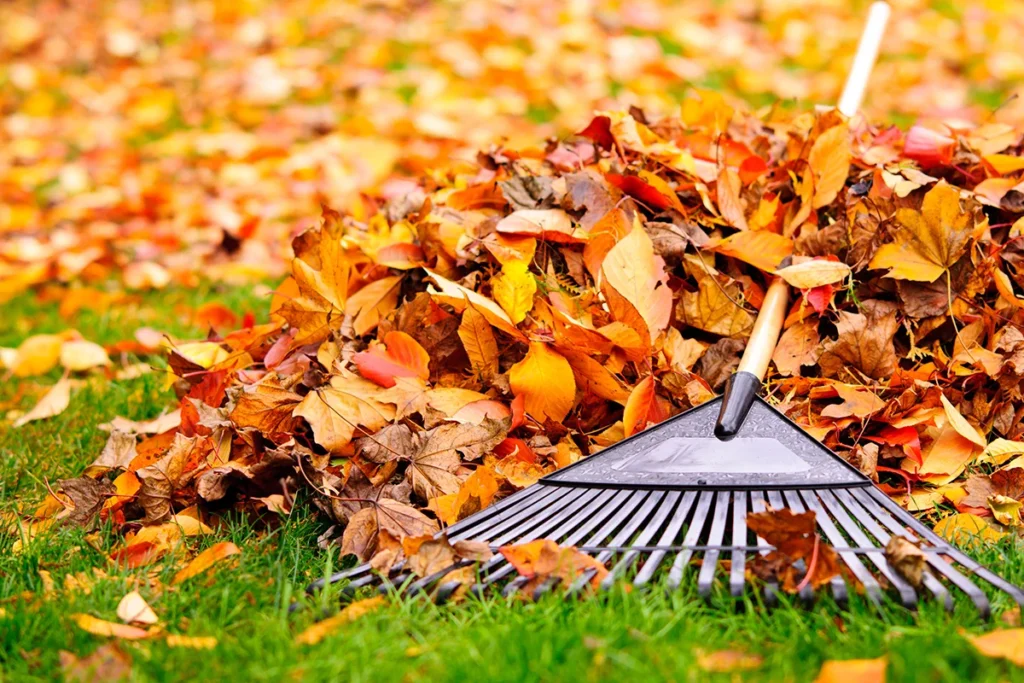Fall is in full swing, which means the trees of Sonoma County are displaying beautiful foliage and dropping their leaves to prepare for dormancy. However, leaf piles in your yard can be messy and harbor pests like ticks and rodents.
Fortunately, there are many simple ways to address fallen leaves and keep your yard clean, beautiful, and safe. In this guide, we provide strategies for managing tree leaves and offer useful ideas for repurposing them.
Should You Remove Fallen Leaves from Your Yard?
You may have heard conflicting advice about what to do with the fallen leaves in your yard. Should you rake them up, or leave them be?
Leaves are surprisingly useful natural resources. They contain 50-80% of the nutrients a tree absorbs all season1 and release them back into the soil when they decompose. This means you can repurpose them as compost or natural tree mulch.
However, leaves can also smother your lawn, invite pests, and make your yard look messy. Removing them is often the best choice for keeping your outdoor space safe and looking its best.
Are Fallen Tree Leaves Biodegradable?
Fallen tree leaves are naturally biodegradable, meaning bacteria and other organisms break them down over time. Whole tree leaves take about 2-3 years to fully decompose. However, if you cut tree leaves up into smaller pieces, they break down within 1 year—releasing valuable nutrients back into the soil.
How to Manage Fallen Tree Leaves
There are many ways to effectively manage leaves in your yard without wasting the natural resources they offer. Below, we list expert tips to help you do so.
Rake the Leaves

Using a rake is a common and straightforward leaf removal method that is especially effective in smaller outdoor spaces. Here are some tips for raking the leaves in your yard:
- Choose the right rake: There are many garden rakes available on the market, but you’ll need one made specifically for leaves. These are typically wide and fan-shaped.
- Rake when the leaves are dry: Leaves clump together less when they are dry, making them easier to manage.
- Divide and conquer: Address sections of your yard at a time to make the task less overwhelming.
Once you have your leaves raked into piles, you can place them inside pop-up leaf bags, garbage bags, or a yard waste bin until you decide what to do with them (which we will explore later).
Use a Mulching Lawn Mower

If you have a larger yard, a regular lawn mower will collect the leaves and other debris in a grass catcher bag—but using a mulching mower is even better.
A mulching lawn mower chops up the grass and leaves into tiny clippings and spreads them back onto the lawn. These clippings act like fertilizer, allowing the grass to access the leaves’ nutrients without being smothered.
If you use a regular lawn mower, you can still repurpose the chopped leaves collected in the grass catcher bag.
How to Reuse Fallen Leaves: 3 Eco-Friendly Ways to Repurpose Fallen Tree Leaves

Once you have collected your leaves using a rake or a lawn mower, now you must decide what to do with them. While you can simply throw them away in your yard waste bin, landscape waste can take up valuable landfill space and remove essential nutrients from the environment1.
Fortunately, there are lots of simple ways to repurpose these amazing natural resources to benefit your trees or garden.
Make Compost for Your Trees
Compost is made from organic decomposed matter like fruit and vegetable scraps, coffee grounds, grass clippings— and leaves. Compost makes great fertilizer for your trees and can easily be sprinkled on top of the surrounding soil or worked into the dirt using a rake. You can also use it to give your houseplants, garden beds, or lawn a little extra love.
Simply empty the lawn mower bag or leaf piles into your compost bin, let them decompose naturally— and voilà! In about 6 months, they will no longer be leaves, but ready-to-use compost2.
Cover Vegetables in Your Garden
Tree leaves make an excellent insulating layer for winter garden vegetables like kale, leeks, carrots, and beets. This helps protect the root systems from frost and potentially damaging low temperatures. Just be sure to shred them first—whole leaves may block the roots from getting enough water.
Use the Leaves as Tree Mulch
Leaves can be used as mulch, which is used to help trees retain moisture, regulate soil temperature, and suppress weeds. Simply spread the leaves evenly around the base of the tree to create a layer about 2-4 inches thick and let the leaves decompose.
Get Expert Tree Care Recommendations from Experienced Arborists
With fall in full swing and winter steadily approaching, there is no better time than now to give your trees the care they need. The certified arborists at Vintage Tree Care are ready to help prepare your trees for winter with comprehensive tree care services, personalized to their needs and yours. Contact us online today or call (707) 495-4686 to learn more about how we can help.
References
1. Don’t bag it – Leaf Management Plan – Earth-Kind® Landscaping Earth-Kind® Landscaping. (n.d.). https://aggie-horticulture.tamu.edu/earthkind/landscape/leaf-management-plan
2. Slippery Rock University of Pennsylvania. (n.d.). SRU composting advocates ‘break down’ options for fallen leaves. https://www.sru.edu/news/110220a
The comments are closed.



No comments yet